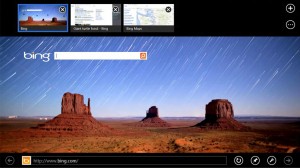 Summer’s approaching, and energy bills are going up. And if you want to cut your PC’s power bill, you should use… Microsoft’s Internet Explorer.
Summer’s approaching, and energy bills are going up. And if you want to cut your PC’s power bill, you should use… Microsoft’s Internet Explorer.
That’s the result of a Microsoft-sponsored study (PDF) by Fraunhofer, which found that Internet Explorer consumed less power than both Chrome and Mozilla’s Firefox when accessing the Web’s top 10 sites.
Watt’s the difference?
Unfortunately for Microsoft’s case, the differences are minuscule – on the order of about a watt when laptops were measured surfing Web sites, or just 2 percent or so between the other two.
When using Flash, however, the differences are more pronounced: Microsoft’s Internet Explorer uses 18.6 percent less power than Chrome, Microsoft said.
That’s not to say that Microsoft let that small fact stop it from extrapolating the massive energy savings if only the nation’s computing population could be converted over to its browser. Redmond said the energy saved could power 10,000 households in the United States for a year, Microsoft said, or provide the carbon reduction equivalent of growing 2.2 million trees for 10 years.
Fraunhofer didn’t explain exactly why the browsers consume more power, although it’s presumably tied to the number of processor CPU cycles consumed over time. The implication is that IE is more power-efficient than the other browsers, even if it may not be the absolute fastest.
HTML5 power processing
Nevertheless, the Fraunhofer study found another interesting angle: the processing power needed to render a site coded in HTML5 could far outpace that of a normal Web site.
“Testing of two HTML5 websites (one benchmark, one video) and one Flash video found that both appear to increase power draw significantly more than the top 10 websites tested,” the study said. “Most notably, the HTML5 benchmark test condition more than doubled the notebook power draw for all computers and browsers tested, while desktop power draw increased by approximately 50 percent.”
Unfortunately, Fraunhofer didn’t perform enough tests to conclusively prove that an HTML5 site would consume more power, perhaps because a CPU-intensive benchmark was included. The firm said that more testing was needed.





